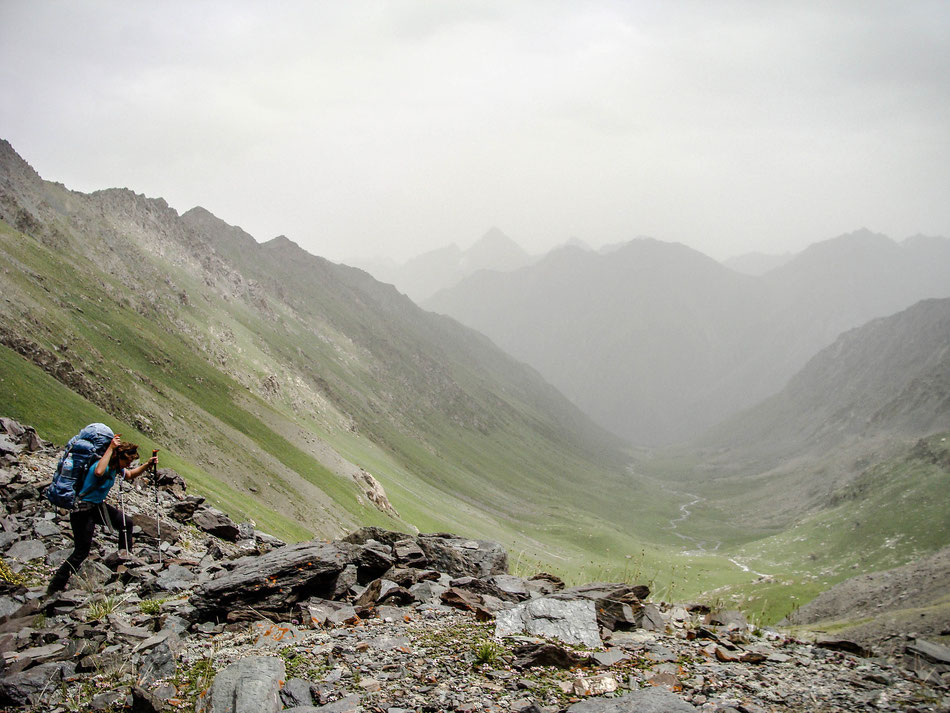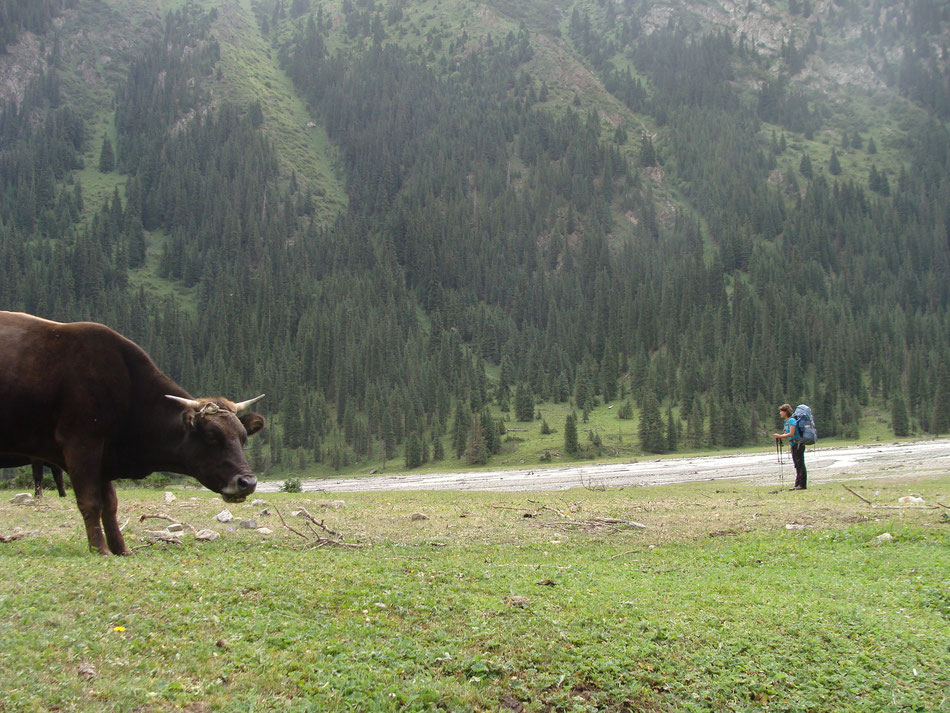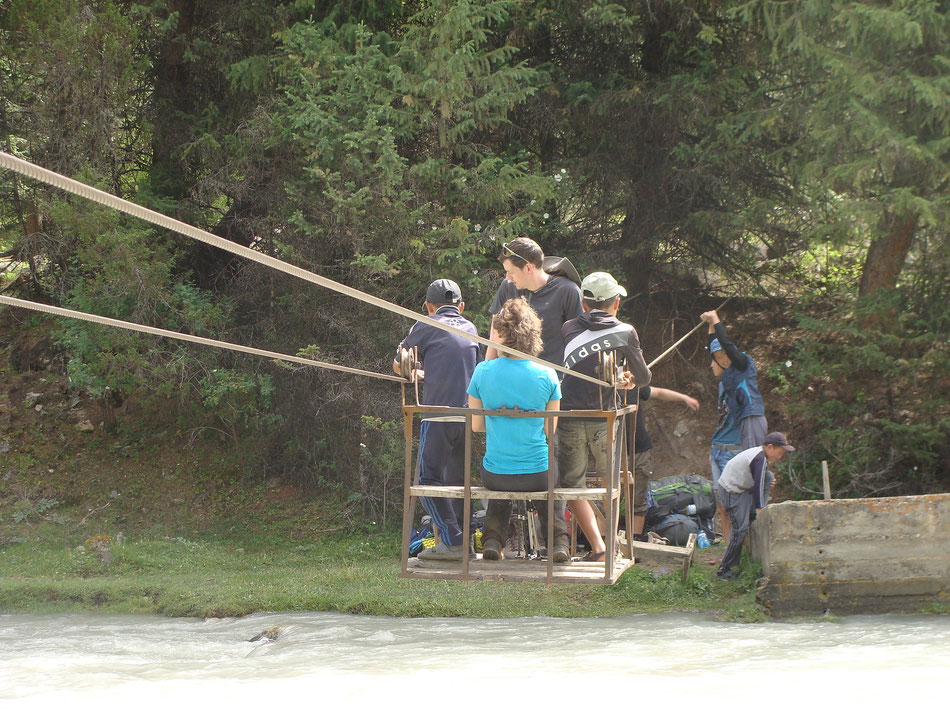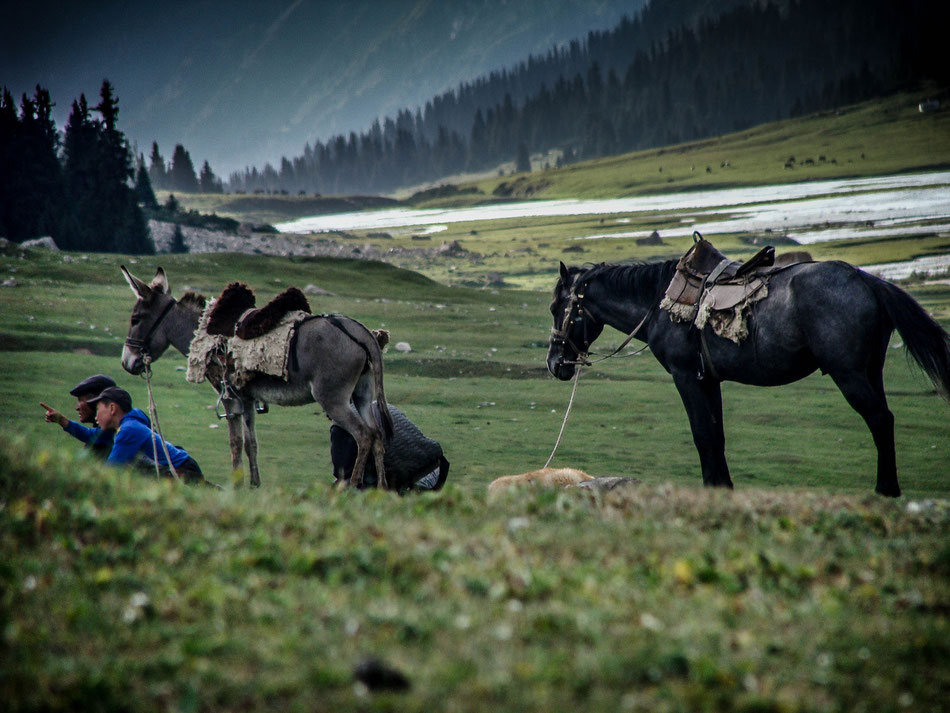
We (Chrisitan, Matthias & I) flew from Berlin over Istanbul to Bishkek. Bishkek (old name: Frunse), the main capital of Kyrgyzstan. All those flight's should take us about 1 day to reach the capital of Kyrgyzstan, we thought so. But didn’t imagined, that we’ll get such troubles like: missing the continuing flight in Istanbul to Bishkek because of the delayed airplane of our airplane in Berlin. And to miss the flight the day after again in Istanbul because the hotel, where we had been brought by the flying company missed to bring us early enough to the airport in Istanbul to get the airplane to Bishkek. Sad, but true.
The next night, we planned and regulated the way to the airport by our self. We reached the airport in time and had a relaxing flight to Kyrgyzstan.
In Bishkek, we met our friends (Lydia & Markus), who started from Munich instead of Berlin. They had been waiting since 2 days, because they arrived in K. without any delays. Finally, we went by a ‘Mashrutka’ (a sort of small bus) from Bishkek to Karakol in about 6 h. We paid only 6 €.
When we arrived there, we celebrated our lucky arrival of our tour start in a small pizza restaurant. Unfortunately, Markus became sick – we jumped out of a frying pan into the fire.

At day 1, we started early in the morning from our hostel in Karakol, took a taxi and led us drove to the entrance of the mountains, to Kyzyl Suu. The mountains, in which we are hiking now are the Alatau Mountain rage. These are an extension of the Tien Shan which belongs to the Himalaya. 11 days of hiking in front of us, 4 mountain passages – each of them almost 4000m high. As well 5 deep panoramic valleys.
The weather was fair, no rain and no wind (the opposite of Iceland) but temperatures, high like hell (the opposite of Iceland). The first day was just made up to start easy, which was necessary to get to know the heavy back pack (>25 kg) and to made it as comfortable as possibte to Markus.
The 3rd day, we crossed the first mountain pass with a height of 3930 m. Such a cool feeling to stand at this height. In comparison, mountains like these are seldom in the Alps.
Afterwards, a stunning valley was waiting for us. With a view at a 5000 m high mountain wall, including the mountain Okuz Bashi, we built up our camp. Luckily, Markus became better and
better.
Another new thing to us was waiting the next day. We had to cross the Jeti-Oguz River. Therefore we took the offer of some nomads. We went over the river with some horses. When we passed by a Yurt-tent, we had been asked for some med’s and got some Kumis. Kumis is a kind of fermented horse milk. The taste was not as comfortable as expected (;

We went over the 2nd mountain pass and entered a valley, where we built up our tent close to the glacier of Mt. Karakol. An impressive snow and ice covered mountain. A lot of Alpinists lost their life s when they tried to ascend this tempting mountain.
The third mountain pass was waiting for us. Like all the other days before, we camped just below the highest point of the pass and entered the mountain passage the next day. A deep blue glacier lake (Ara-kol lake) was lying next to the path of through the mountain pass. One of the most impressing and scenic views I ever had. Just behind the lake had been all the glacier covered mountains of the Alatau mountain range.
Back into the valley (Arashan valley), we went to a small village and built up our tents in a camp site. As this place was by far not that interesting, we went up the last mountain pass at day 9 instead of resting one day in the village. Just before we passed the last mountain passage, we saw red hills, which reminded us a bit of Iceland. We left them behind us and walked down into a pretty beautiful valley where we met a kind small nomad family. In contrast, they owned 1000 sheep's and goats, 250 horses and some cows. We had been invited for a tea. This means in Kyrgyzstan, we had been invited to a big dinner.

The next morning, we crossed the bridge over another river which carried a lot of water from melting snow and ice. Only between 8 and 11 a.m. it was possible to enter this bridge as the water level was low enough. The last part of this trip was just the way down, leaving the mountains and coming back into civilisation after 10 and not 11 days. We took a small bus back to Karakol and rest the evening in the city.
The day after, we headed back to Bishkek with another Mashrutka, passing by the big lake Issyk-Kul, taking a bath and continuing to go by bus back to the capital of Kyrgyzstan.
We used the last day in Kyrgyzstan to walk around in the city, to the bazar and meet friends, which we met when we went from Berlin over Istanbul to Kyrgyzstan. Overall, we had a lot of fun, got experience in difficult mountain heights. But the most obvious part of this trip was the big contrast between a rich nature and a poor ex-Soviet country itself.








